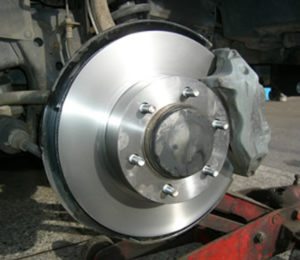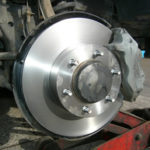Brake Disc Tips from RoughTrax
 If you’ve recently checked your brakes and noticed some strange marks or discolouration then here is some help and advice so that you know what action to take.
If you’ve recently checked your brakes and noticed some strange marks or discolouration then here is some help and advice so that you know what action to take.
Normal Wear
The braking surface should be flat and smooth with light scoring and visible wear ridges on both the outer and inner edges. There should be no visible cracks in the disc.
Action: No action is required unless the disc thickness is below the recommended minimum
Dirty/Rusty Hub
Imprints or deposits of rust / dirt on the disc mating face indicate that the wheel hub was not cleaned adequately before the disc was fitted. This often starts after a few hundred braking stops and becomes progressively more severe, because the run-out causes the disc to wear unevenly.
Action: Replace disc, ensuring mating surfaces are completely flat and free from all deposits
Discolouration
Varying intensity and shades on all or part of the disc surface. This is caused by a faulty caliper or by making repeated hard stops from high speed. Overheating the disc alters the structure and sometimes leads to run-out and vibration.
Action: If run-out has occurred, replace disc and observe a rubbing period, avoiding heavy braking for the first 200 miles
Partial Pad Contact
The pads are only making partial contact with the disc as indicated by the corroded section of the braking surface. This is caused by a faulty caliper, loss of part of the friction material or the wrong brake pads for the vehicle.
Action: Replace disc and pads and check caliper for wear and correct operation
Discs
Circumferential grooves around the disc nearly always occur as a result of foreign bodies becoming trapped between the pad and the braking surface. Badly distributed abrasives or hard object embedded in the friction material can also cause scoring – although both these faults are rare.
Action: Replace brake discs
Heat Spots and Cracks
Friction material deposits, heat spots and radial cracks in the braking surface of the disc are signs of overheating. Deep cracks are rare but are more likely to occur if the disc has worn below its minimum thickness. Cracks adjacent to stud and fixing holes result from failure to follow recommended tightening sequences and / or tightening torque settings.
Action: Replace brake discs
We supply Genuine Toyota and Kavo brake discs. Click here to view all of our Brake Parts.
